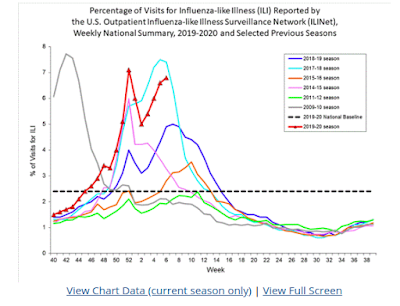#13,868
Although testing of suspected COVID-19 cases in the United States is limited to people with recent travel to China, and/or contacts of confirmed cases, that is about to change as today the CDC's Nancy Messonnier announced plans to phase in novel coronavirus testing alongside influenza surveillance in 5 locations; San Francisco, Seattle, New York, Los Angeles and Chicago.
While it is expected that - at least right now - there are very few (if ewany) undetected COVID-19 cases in the United States, that could quickly change. And by targeting some of the largest U.S. cities, and regions with a lot of travelers from Asia, this approach might give us early warning if that status changes.Regional labs will subject respiratory samples from these 5 cities that test negative for influenza to additional testing, looking for this emerging coronavirus.
Even during the height of the 2009 H1N1 pandemic, roughly 70% of the respiratory samples sent to the CDC for analysis were not positive for the influenza virus (see ILI’s Aren’t Always The Flu). There's a wide array of adenoviruses, rhinoviruses, coronaviruses and other non-influenza viruses that cause the majority of respiratory illnesses each year.
 |
| Graph based On CDC Flu Data early October 2009 |
For now, and for at least the next few weeks, seasonal influenza is the real respiratory illness threat to Americans. And according to today's FluView Epi Week 6 report, seasonal H1N1 activity continues to rise as - once again - we are seeing a double-peaked flu season.


As always, it isn't too late to get a flu shot, since there could be a couple of more months of flu still ahead.
Now is also the time to rigorously practice good flu hygiene. Stay home if you are sick, avoid crowds, wash your hands frequently, and cover your coughs and sneezes.If you do get sick, call your doctor. Early treatment with antivirals can shorten your illness, and for some patients, can be life saving.

